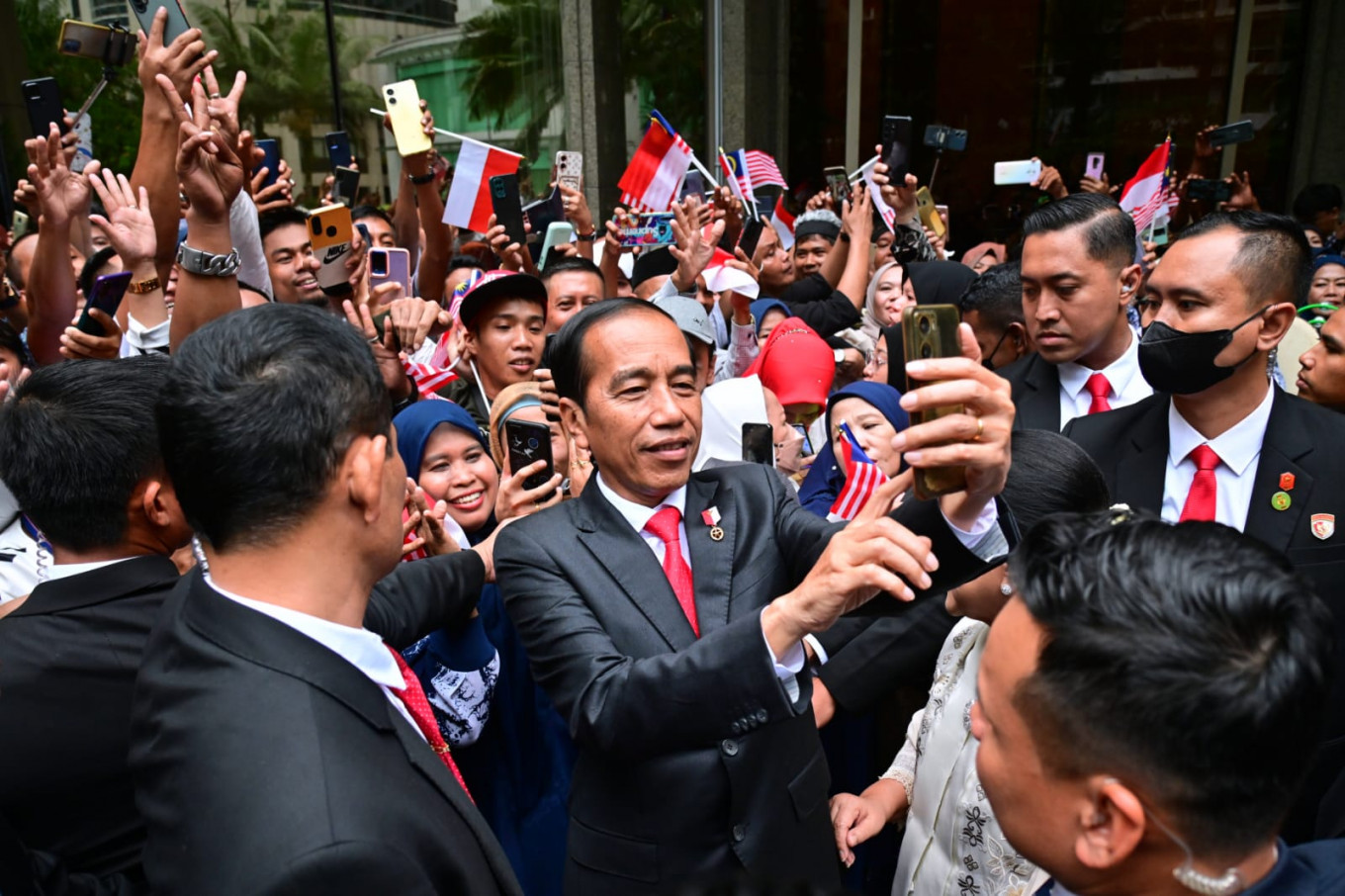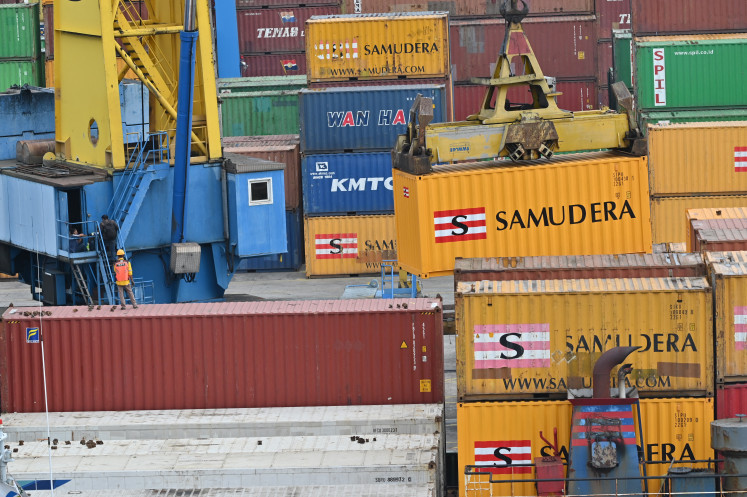Malaysia-Indonesia maritime treaty: One step forward, never a step back
Jakarta and Kuala Lumpur have been able to resolve overlapping maritime disputes without going to third-party arbitration or to the International Court of Justice (ICJ).
Change text size
Gift Premium Articles
to Anyone

A
fter almost two decades of negotiations, Indonesia and Malaysia have finally reached an agreement on maritime delimitation in the southern portion of the Strait of Malacca toward the Singapore Strait and the territorial sea boundary in the Sulawesi Sea.
This deal was part of a number of agreements signed by the two countries during President Joko “Jokowi” Widodo's visit to Malaysia on June 8.
Is this a step forward for both nations in finalizing their unresolved maritime boundaries since achieving independence?
Article 3 of the United Nations Convention on the Law of the Sea 1982 (UNCLOS) clearly states that a coastal state may claim up to 12 nautical miles (approximately 22 kilometers) of territorial sea from the baseline of the coastal state.
The coastal state has absolute sovereignty over its territorial sea area which consists of both the seabed and the marine waters within that specified zone.
Beyond this 12-nautical miles limit, a coastal state could no longer exert sovereignty but it could however, exercise sovereign rights up to 200 nautical miles (approximately 370 km) of “exclusive economic zone” (EEZ), otherwise known as the “fishing zone”.
Within the EEZ, a coastal state possesses sovereign rights for exploring and exploiting, conserving and managing the natural resources of the waters and of the seabed. However, when it comes to the resources of the seabed, the exploration and exploitation shall be in accordance with another regime called the “continental shelf”, usually rich in minerals and petroleum deposits. According to LOSC, a coastal state’s entitlement to the continental shelf can go beyond 200 nautical miles measured from its baseline.
On one hand, in accordance with LOSC, a coastal state is entitled to large maritime areas, and they can be significantly larger than its land territory. On the other hand, states are located close to each other, so it is almost impossible for a coastal state to secure the entire maritime area it is entitled to without having it overlap with those of its neighbors.
Here is where maritime boundaries between neighbors are needed. This is what Indonesia and Malaysia are doing.
Recently, Malaysia and Indonesia have concluded territorial sea boundary treaties both in the Strait of Malacca and the Celebes Sea. Nevertheless, this does not include the EEZ boundary between both nations in the Strait of Malacca and that of the continental shelf of the Ambalat Block.
Although some parties may have seen this as a move that has “sold” the sovereignty of either nation, this initiative by both President Jokowi and Prime Minister Anwar Ibrahim is actually a healthy way forward. Jakarta and Kuala Lumpur are able to resolve overlapping maritime disputes without having to go to third-party arbitration or to the International Court of Justice (ICJ).
In a negotiation, there can never be a party that takes all. This scenario would be different if the case is decided by, for instance, the ICJ. Indonesia might still remember the loss they had to endure when the ICJ decided that the sovereignty over both Sipadan and Ligitan islands was with Malaysia in 2002.
Similarly, Malaysia finds it difficult to get over Pedra Branca, or Batu Puteh, a rocky outcrop that was awarded to Singapore by the ICJ in 2008. When the ICJ decided that the Temple of Preah Vihear was to be with Cambodia in 1962, it ultimately caused a conflict between Cambodia and Thailand until the dispute was resolved in 2011.
Therefore, negotiation is key, and through negotiation, Malaysia and Indonesia can compromise in delimiting the extent of their maritime claims without ending up distrusting each other, allowing both to enjoy a win-win situation.
This is not the first time Malaysia and Indonesia have concluded maritime boundary treaties. Prior to this, the two neighbors delimited continental shelf and territorial sea boundaries in the Strait of Malacca in 1969 and 1970, respectively, without much hindrance. If this could be done then, why couldn’t it be done now?
Maritime delimitation between Indonesia and Malaysia is the result of a series of negotiation processes. It usually starts by unilateral claim proposal by each country indicating the location boundary lines each country wants. Usually, there must be differences between the two that causes overlapping maritime areas. Negotiations are usually to deal with such overlapping areas.
Surely, each country, at the beginning of a negotiation, will try its best to convince the opposite party to accept its proposal. It is understandable, however, that no party will fully accept other’s proposal without any objection. They will negotiate and come up with a line through compromise.
This is the true nature of negotiation. Each party will eventually obtain less than what they initially wanted. Only by accepting this can both move on and deal with other matters that matter more.
To come up with the June 2023 maritime boundary agreement, surely Malaysia and Indonesia have done their best to come up with the best possible solution for both parties. While the agreement is not yet available to the public, there is a strong indication that the agreed line is a good compromise between each other’s initial proposal.
Regardless of the result of the June 2023 agreement, the two countries have once again set a good example of how disputes between neighbors can be solved peacefully through negotiation. As two good neighbors, settling definitive borders is an effective way to ensure good long relations.
As Robert Frost, an American poet, once said, “Good fences make good neighbors”.
***
Mohd Hazmi Mohd Rusli is an associate professor at the Faculty of Sharia and Law, Universiti Sains Islam Malaysia. I Made Andi Arsana is a lecturer at the Department of Geodetic Engineering, Gadjah Mada University, Yogyakarta.









